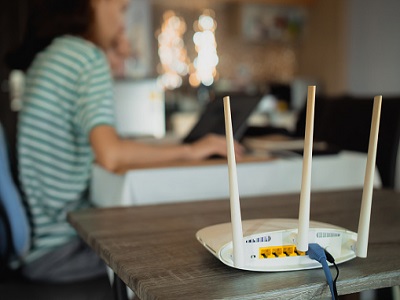Fiber-to-the-Home Platforms: Access to High-Speed Internet
Category : Home Internet & Fibre | Sub Category : Home Internet & Fibre Posted on 2025-04-25 15:56:39

High-speed
internet connectivity has become essential in the digital age for both personal
and business use. As the use of the Internet for social contact, work,
education, and entertainment increases, reliable and effective connection
solutions are essential. The use of Fiber-to-the-Home (FTTH) systems is one
such approach that has been more popular recently. FTTH, a state-of-the-art broadband
technology, offers several advantages over conventional copper and wireless
broadband connections by delivering blazingly high internet speeds straight to
residential residences via fiber optic cables.
Because
of their many benefits, FTTH technologies are revolutionizing the
communications industry. The connection's dependability and speed are its main
benefits. Large volumes of data may be carried over great distances without
suffering appreciable quality degradation because of fiber optics, which use
light signals to convey data. Faster internet speeds result from this, making
them perfect for tasks like video conferencing, online gaming, remote work, and
streaming HD videos. Fiber optic connections offer a more constant and
dependable internet experience than traditional copper lines because they are
less vulnerable to electrical interference and signal deterioration.
The
scalability of FTTH is an additional advantage. Fiber optic networks can
readily handle more traffic without requiring significant infrastructure
modifications, even as the need for more bandwidth keeps rising. FTTH is a
great long-term option for future-proofing internet services because of its
scalability, which guarantees that consumers will have access to
ever-increasing speeds as new applications and technologies are developed. For
jobs like cloud computing, content production, and remote work, FTTH also
enables symmetrical speeds, which means that upload and download rates are
frequently equally quick.
Despite
the obvious benefits of FTTH, the infrastructure investment needed for broad
adoption is still a barrier. Digging holes and installing fiber lines are
necessary steps in the costly and time-consuming process of installing fiber
optic cables in residences. The expense of installation may discourage service
providers from growing fiber networks in many places, especially in rural and
underserved areas. Through financing programs, subsidies, and legislative
changes, governments and private businesses are collaborating to remove these
obstacles and promote wider access to FTTH.
FTTH
systems are essential for closing the digital gap in addition to their
technological advantages. People without access to high-speed internet are at a
serious disadvantage because of the growing dependence on the internet for
business and education purposes. Governments and service providers may
contribute to ensuring that everyone has the chance to engage in the digital
economy, irrespective of geography or socioeconomic background, by extending
FTTH infrastructure to other regions. Better access to healthcare services,
better educational performance, and greater chances for economic progress might
result from this expanded access.
The
development of fiber-to-the-home systems is a major step in providing
high-speed internet access to everyone. Fast, dependable, and scalable internet
connections are provided by FTTH technology, which assists in meeting today's
digital needs and preparing communities for the future. The long-term
advantages of FTTH, such as higher speeds, improved dependability, and expanded
access to critical services, make it a crucial part of contemporary broadband
infrastructure, notwithstanding the difficulties associated with establishing
fiber networks. The future of connectivity and closing the digital divide will
be significantly influenced by FTTH as more investments are made to increase
its coverage.
#HomeInternetFibre #Internet
Search
Categories
Recent News
- Introducing the Latest Model of Apple iPhone: Cutting-Edge at Your Fingertips
- The Latest Model of Samsung Galaxy: A Remarkable Blend of Innovation and Style
- Unlimited Smartphone Plans for You
- The Latest Buzz in Smartphone News
- The Best Smartphone Options Available
- Existing Wireless Connection: Enabling Connectivity Beyond Boundaries
- Wireless Connection Devices: Revolutionizing Connectivity
- Smartphone Audio Quality: A New Era of Immersive Sound